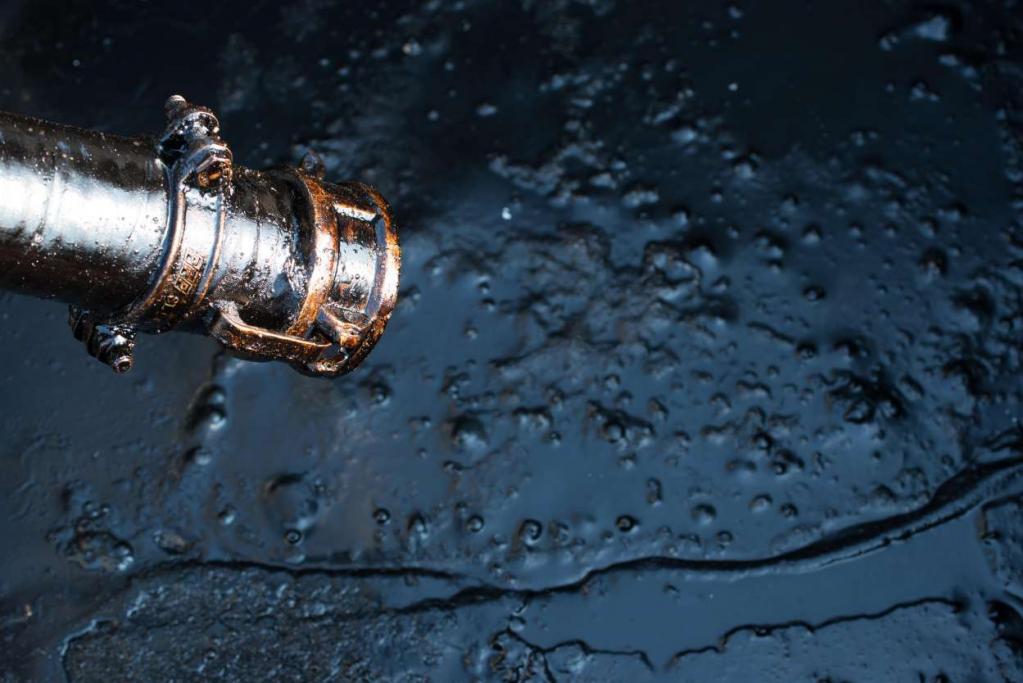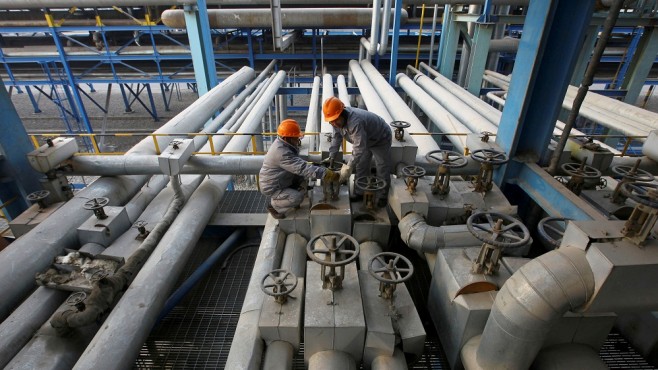The processes of exploitation of oil wells in the fields are often accompanied by flooding of the treated reservoirs, against which stable water-oil emulsions are formed. As a result, precipitation forms, which increase the viscosity of the mixture and increase its pour point. In this state, the resources must undergo primary processing, one of which is the stabilization of oil and its associated emulsions.
Characteristics of the processed material

Like preparatory desalination and dehydration processes, stabilization is used for oily materials contaminated with foreign liquid phases and particles. As already noted, mainly we are talking about water-emulsion mixtures containing surface-active components. The presence of emulsifiers, in turn, makes the emulsion more stable and immune to external factors, which prevents the oil fraction from exfoliating naturally at the molecular level. Also, the composition may include mechanical impurities, elements of heavy metals, resins and paraffins. Under natural conditions, oil stabilization is a dynamic process determined by the characteristics of competing adsorption of emulsifying components on water droplets of water. Determining the composition of the interfacial layers of a particular emulsion allows us to find out the properties of its stabilizer and select the most effective method of exposure at an industrial level in an artificial environment.
Why is stabilization needed?

The processes of physical and chemical stabilization in the oil and gas industry can have several tasks. To begin with, it is worth noting the shortcomings of oil production technologies, which are expressed in the loss of light fractions of a useful substance. On the other hand, a number of sludge and harmful volatile gases are recovered and transported together with the oil phase right up to the refining stages. In turn, the technology of oil stabilization, depending on the activity of emulsifiers and other active components in the composition of the emulsion, can fulfill both conservation functions and act as a means of separation. In the first case, the effect of sealing the emulsion is ensured, which makes it possible to remove, together with the oil base, fractions of light and heavy carbons that can be used in the oil and gas industry. With regard to separation, the phases of oil, water, gas, solids and other sludge are separated within the framework of this function. Moreover, it must be emphasized that the separation technique itself does not at all mean the automatic release of components other than oil. The composition may contain useful fractions, but their further processing will occur separately from oil.
The principle of operation of the stabilization process
The technology can be produced in two main ways - by separation and by rectification. In the first case, the associated gas phases and hydrocarbons are separated. For example, the separation can be organized as an evaporation process, provided by changes in temperature and pressure in the working chamber. What is the process of oil stabilization through rectification? This method also involves the separation of certain phases, but the emphasis is on the process of heating the emulsion. In both cases, the parameters and additional processing processes will be established by the requirements for specific fractions, which must be selected or stored in the composition.
Stabilization process
In an extended scheme, stabilization of water-oil emulsions can be represented by the following sequence of operations:
- Examination of a sample of the recovered emulsion. In laboratory conditions, based on the analysis of the sample, the composition, density, viscosity, volatility, flammability and other characteristics of the mixture are determined.
- Preparation for the process of chemical demulsification. Typically, heat is used, which lowers the viscosity of the emulsion and facilitates the further separation process.
- The technology of separation is determined - by gravitational, electromechanical or electrochemical method.
- Directly the process of stabilization of oil, in which several phases are allocated. Further, technologies for preparing the extracted oil for production operations can be produced.
- Modification of an isolated product due to active chemicals.
Oil preparation for stabilization

Before the start of the technological processes of primary treatment, oil passes through several transportation hubs, within the framework of which preliminary rough treatment points can be organized. This can be general filtration, eliminating the emulsion from large particles of sand and sludge. From the field to the nearest crude oil collector, the product passes several metering units, which also take primary samples and keep track of the missed volume. At the primary separation unit, raw materials are separated from produced water and associated gas in certain quantities. Oil is partially stabilized in the degassed and dehydrated state, but this is not the main requirement. Moreover, crude oil can accumulate at collection points without any preliminary treatment and in this condition can be sent to refineries - then desalination, dehydration and stabilization procedures are carried out in a different order. Today, complex cleaning and separation plants are also used, where in a single processing cycle a group of technological processes of preparing raw materials for a production operation takes place.
Installation to ensure the stabilization process
Most often, universal stabilization separators are used for stabilization. They integrate into the oil and gas trunk networks and operate on the principle of flow service. The typical design is a cylindrical gravity separator with nozzles for connecting to pipelines and communication channels for energy supply. The design of the oil stabilization unit (STS) provides for several sections with a distribution manifold, through which the separated phases are redirected through different channels. Oil, for example, is sent to a precipitation unit for the subsequent separation of occluded gas bubbles. Hydrocyclone two-capacity separators operate on the principle of centrifugal forces, separating oil and gas into separate flows.
Equipment for stabilization and refining processes
The combined method of oil preparation in this case involves the implementation of processes for cleaning the product from light mercaptans and hydrogen sulfide. In the oil field, this is the optimal combination of methods for the preliminary preparation of raw materials for further production stages. In the general technological process of purification and stabilization, heating, steam irrigation, gas separation and the removal of purified residues are used. An important condition is the regulation of pressure in the ranges of 0.1-0.2 MPa at temperatures up to 160 º. By using a properly selected stripping agent, it is possible to achieve high quality oil stabilization in the fields with the necessary selection of distillates. The quality of the final product increases with the operational decrease in temperature and pressure, which increases the intensity of separation of mixtures.
Distillation column device
In complex multifunctional plants, column groups are used to save logistics operations. Each of them performs a specific technological process, and in the common infrastructure at different levels related procedures take place. In this case, oil stabilization columns by distillation are considered. As a rule, this operation is organized after the processes of dehydration and desalination. The column has a heat exchanger in which the oil is heated to the optimum temperature, after which it is withdrawn in the form of a vapor-gas-liquid mixture and separated into phases. On special plates of the rectifier, the liquid phases are irrigated with a steaming substance. Then, cooling and enrichment processes with other active elements may follow, depending on the requirements for the distillate to be selected.
Positive stabilization effects
The technological organization of oil preparation processes requires considerable energy costs. The complexity of such procedures is also due to the fact that they are often performed in the conditions of the fishery without a high level of infrastructure support. Nevertheless, the stabilization of oil at the initial stages of refining provides the following advantages:
- Reducing the volume of excess fractions that are sent to the fine lines before production.
- Simplification of technological schemes for oil treatment in oil and gas plants.
- Improving the safety of oil transportation due to the preliminary withdrawal of sulfur-containing compounds.
- The increase in the volume of marketable oil due to the preservation of useful hydrocarbon components.
- Low requirements for processed raw materials.
Conclusion
Stabilization methods are part of the overall process of cleaning water-oil emulsions, but have their own characteristics in terms of application. Firstly, it is a flexible procedure for its intended purpose. It can be performed both for the purpose of preserving certain elements in the composition during the extraction and transportation of the resource, and for separation with the withdrawal of unnecessary components. Secondly, stabilization methods converge in execution technology with common techniques for physicochemical preparation of oil and gas raw materials, but with certain differences in the exposure parameters from the active media.